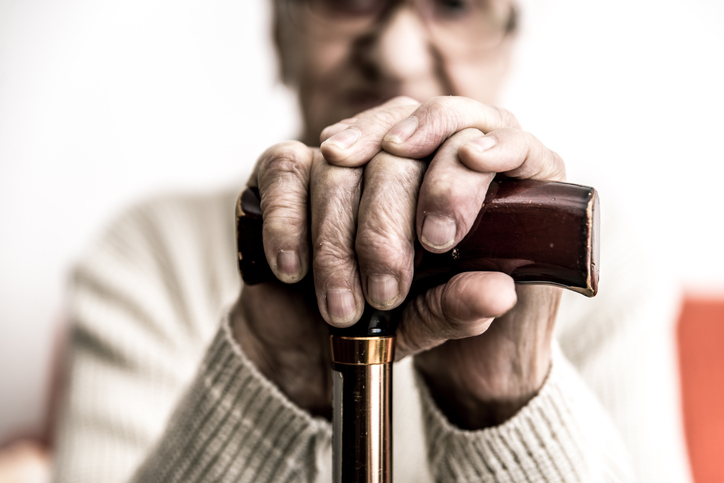
White orthopedic shoes. Walkers with tennis ball tips. Hearing aids that look like slabs of Play-Doh.
Products for older adults have typically focused on utility rather than style. And like the cars that reveal our hidden personalities, lackluster design for older adults offers an unfortunate message.
“If we are what we use, then it seems the elderly people in today’s society are cranky, stupid and tacky,” wrote designer Gretchen Anderson a decade ago in Gizmodo – her clarion call for more elegant design.
Last August, the Nielsen research firm reported that Baby Boomers own 70% of America’s disposable income – money available for spending – and are hefting that wealth into old age.
Retailers are beginning to eye that demographic – albeit slowly.
“The market has not yet caught on that there’s money to be made there,” said Anderson in a recent interview.
Websites such as The Senior Shop and Gold Violin still sell traditional old-school clothing and products that emphasize function over style – and scream “old person.”
“It’s all very vanilla, and it’s all very risk averse,” says Anderson.
Yet materialistic and tech-savvy Baby Boomers are today seeking fresher product designs that are both attractive and useful.
Aiming at the oft-maligned white orthopedic shoe, Spenco produces several lines of shoes that are both colorful and stylish.
Borrowing the Danish word for “with great care,” the OMHU company produces a series of designer canes sporting a variety of colors and styles.
OMHU “has reconceptualized the cane as a high-fashion item,” says Jeff Rosenfeld, who teaches the class “Design for Aging Populations” at New York City’s Parsons School of Design.
The Starkey company reconceived its hearing aids by hiring Stuart Karten Design to make them both more attractive and easier to use.
Celebrated architect and designer Michael Graves, now 79, was paralyzed from the waist down a decade ago with a mysterious infection, giving him a close-up view of the sanitized world of healthcare design.
“I had really good care and really atrocious rooms,” Graves told a reporter last year. “I thought to myself, ‘I can’t die here. It’s too ugly.’”
His firm is now busy redesigning both medical devices and furnishings for patient rooms.
The website Elderluxe collects an extensive array of products for older adults that target affluent buyers.
Founder Patrick Conboy, while working for the advertising agency Foote Cone & Belding, was caring for aging parents over a thousand miles away, and searched the globe for quality merchandise that complemented his parents’ lifestyle.
“I was frustrated with the level of commodity product that was available,” he says. “It went against what they had worked for and what I thought they deserved.”
Opened in 2007, Elderluxe now sells high-end products that include an Irish Blackthorn Walking Stick, wireless blood pressure monitors, shock-reducing floor mats, and The Luggie – a foldable scooter with its own suitcase that older adults can carry while traveling.
One of the first companies to capitalize on the growing trend for “universal design” – products for all ages – was OXO, whose founder Sam Farber noticed how hard it was for his wife to grasp kitchen utensils she once handled with ease. The result: Good Grips.
Universal design principles are clearly evident in airport bathrooms that feature automatic dispensers for water, soap and paper towels.
Yet older adults often need products tailored particularly for their diminishing senses and mobility, including more attractive healthcare tools like glucometers or blood pressure monitors.
Conboy recounts a depressing visit to a medical equipment store before he started Elderluxe.
“It really lacked energy and it was really a turn off,” says Conboy. “It was like you were at the last exit before death.”
While Graves – popularly known for his work at Target stores – has successfully brought style to budget consumers, entrepreneurs like Conboy eye a burgeoning market with a new name: the “wellderly,” or older adults with money to spare.
A former marketing executive for J.C. Penney, Conboy calls Elderluxe a “lifestyle retail concept rather than a medical supply store” that caters to the “well-heeled person who’s still younger and vibrant.” He likens its products to the high-end kitchen supplier Williams-Sonoma.
For Conboy, selling older adult products with style is much more than just a statement about fashion or wealth.
“The more active you stay – physically, intellectually, even sexually – the longer you live,” he says.
David L. Jaffe, who teaches a Stanford University class on assistive technology, envisions a future with several new products targeting older adults.*
“As the market for products serving older adults increases,” he says, “I would hope to see many ‘cool’ products that address a wide range of problems and needs.”
Adds Anderson: “There’s plenty of market out there depending on what you pick to make.”
Conboy says his role at Elderluxe isn’t just dollars and cents but targets a greater cause.
“A kinder, gentler country for aging adults.”
*Note. An earlier version of this article incorrectly identified Jaffe’s position at Stanford and mischaracterized a comment about engineers.





